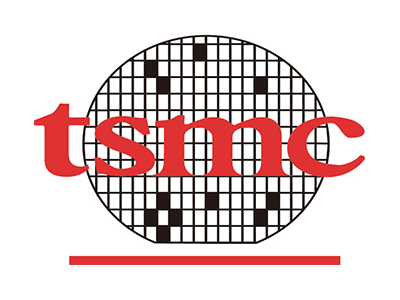台积电(TSM.US)2024年第四季度业绩电话会
文章语言:
简
繁
EN
Share
Minutes
原文
会议摘要
TSMC reported a 14.3% increase in revenue in the fourth quarter compared to the previous quarter, with a gross margin of 59% and an operating margin of 49%. Advanced technologies and specific platforms like HPC contributed significantly to the revenue. The revenue forecast for the first quarter of 2025 is expected to be between NT$25 billion to NT$25.8 billion US, focusing on the seasonality of smartphones and the growth in demand for AI. TSMC plans to allocate a capital budget of NT$38 billion to NT$42 billion US for 2025, with a strong emphasis on advanced technologies and AI, which is projected to double in revenue by 2025.
会议速览
TSMC reported a 14.3% increase in revenue for Q4 2024 compared to the previous quarter, driven by strong demand for its advanced 3nm and 5nm technologies. The gross margin reached 59%, reflecting higher capacity utilization and productivity gains. The company expects a slight decrease in revenue for Q1 2025 due to smartphone seasonality, but anticipates growth in AI demand. In 2025, TSMC plans to invest between $38 and $42 billion in capital expenditures, focusing on advanced technologies and processes to support future growth and meet industry demands from 5G, AI, and HPC trends. Despite the increased investments, TSMC remains committed to profitable growth and providing sustainable cash dividends for shareholders.
The dialogue outlines TSMC's analysis of the global semiconductor industry's performance in 2024, highlighting a mixed recovery with strong demand for AI-related products. It predicts a strong growth for 2025, backed by a healthy inventory level and high demand for AI. TSMC emphasizes its technological leadership and expansion plans in the US, Japan, and Europe to meet long-term market demand. Additionally, it introduces upcoming technologies, such as N2 and A16, demonstrating its ongoing innovation to remain at the forefront of the industry.
The conversation revolves around TSMC's long-term strategy, particularly in the US, taking into account recent events such as Taiwan's N-1 rule relaxation and meetings with Elon Musk. It discusses TSMC's method of integrating the newest technology nodes outside of Taiwan, its hesitation to acquire IDM fabs, and its communication with the US government regarding growth and backing for domestic manufacturing. TSMC stresses that its strategies are based on customer demands and are not affected by competitors' positions, underscoring the significance of staying close to R&D for technology node advancements.
The dialogue discusses TSMC's expectations for gross margin, specifically whether surpassing a 60% gross margin is possible in the current upcycle. It discusses the costs associated with operating in the US, citing higher expenses due to smaller scale operations, a more expensive supply chain, and the early stage of the ecosystem. Additionally, it mentions the long-term revenue growth target of around 20%, driven by demand for AI and the growing significance of silicon content and advanced technology in smartphones and PCs.
TSMC is discussing their views on integrating HBM controllers into the revenue of the AI business, as well as their collaboration with memory suppliers. They are addressing concerns regarding US restrictions on China's AI industry, stating their confidence in acquiring the necessary permits for non-AI sectors. Furthermore, TSMC is highlighting their advancements in silicon photonics and CPO technology, acknowledging significant progress but predicting that substantial volume production will start in around one to one and a half years.
The conversation touches on a range of topics about TSMC's operations, such as the development of their Arizona facility, pricing strategies for wafers manufactured abroad, the company's viewpoint on the demand for custom silicon for AI, long-term gross margin goals, and ways to reduce cost differences between facilities in Taiwan and those overseas. It emphasizes TSMC's dedication to staying profitable, supporting customers, and addressing the operational hurdles of expanding internationally.
The conversation discusses predictions for the worldwide semiconductor industry, focusing on the growth of memory and the importance of Foundry 2.0. It examines market needs, particularly in AI and advanced packaging, and discusses uncertainties regarding capacity and customer requirements. Furthermore, it talks about the role of IDM outsourcing in TSMC's strategy for long-term growth.
要点回答
Q:What are the financial highlights for TSMC's fourth quarter of 2024?
A:In the fourth quarter of 2024, TSMC's revenue increased by 14.3 percent compared to the previous quarter. The gross margin also rose by 1.2 percentage points to 59 percent. The company reported an overall revenue increase of 30 percent in U.S. dollars and 33.9 percent in NT, reaching 2.89 trillion NT. This growth was driven by strong demand for 3 nm and 5 nm process technologies.
Q:What are the expected financial results for the first quarter of 2025?
A:For the first quarter of 2025, TSMC expects revenue to be between 25 billion and 25.8 billion U.S. dollars. This represents a 5.5% sequential decline or a 34.7% year-over-year increase at the midpoint. The expected gross margin is between 57% and 59%, the operating margin is between 46.5% and 48.5%, and the effective tax rate is expected to be between 16 and 17%.
Q:What factors influenced the change in profitability from the fourth quarter to the first quarter of 2025?
A:The profitability margin in the fourth quarter increased by 120 basis points to 59% due to higher capacity utilization and productivity gains. This was partially offset by dilution from the ongoing implementation of the 3 nm technology. On the other hand, the profitability margin in the first quarter is expected to decrease by 100 basis points to 58% because of higher rent costs related to N2 and cohorts expansion, as well as the beginning of dilution from foreign fabs.
Q:What is the estimated growth and profitability forecast for TSMC in 2025?
A:For the full year of 2025, TSMC expects certain factors that could impact profitability. The dilution impact from the entry ramp is expected to decrease gradually, and the utilization rate is expected to moderately increase. However, there are also expected margin dilution impacts from the overseas fab ramp-up, inflationary costs, and expenses related to N2 and N5 capacity conversion. Despite these challenges, TSMC continues to forecast a long-term growth margin of 53% and higher.
Q:TSMC's 2025 capital budget is not available publicly yet. However, once it is disclosed, it will detail how the budget is allocated among different projects or expenses.
A:TSMC's capital budget for 2025 is expected to be between 38 and 42 billion U.S. dollars. 70 percent of this budget will be allocated for advanced process technologies, 10 to 20 percent for specialty technologies, and another 10 to 20 percent for advanced packaging testing, mask making, and other needs.
Q:How is the global semiconductor industry expected to perform in 2025?
A:In 2025, it is predicted that the global semiconductor industry will grow by 12%, driven by strong demand for AI-related products and a rebound in other market segments. TSMC expects its annual revenue to increase by nearly 20% in US dollars, outperforming the industry average.
Q:What is TSMC's strategy for addressing the increasing demand for AI-related applications?
A:TSMC is collaborating closely with customers to strategize capacity planning and is investing in cutting-edge, specialty, and advanced packaging technologies to support their expansion. TSMC is using a disciplined and thorough capacity planning system to assess and analyze market demand, in order to decide on the appropriate capacity expansion.
Q:Cómo está abordando TSMC la necesidad de flexibilidad geográfica y apoyo gubernamental en su red global de fabricación?
How is TSMC addressing the need for geographic flexibility and government support in its global manufacturing footprint?
A:TSMC is offering customers geographic flexibility and seeking appropriate levels of government support to maximize shareholder value. The company has a strong and longstanding relationship with the US government, receiving significant commitments and support from US customers and government entities. TSMC has also made significant progress in expanding its engineering wafer production operations.
Q:Cual es el progreso en la primera instalación de fabricación de TSMC en Arizona?
A:The progress on TSMC's first fabrication facility in Arizona is going well. The first fab has started high-volume production in the fourth quarter using 4nm process technology and achieving a yield that is comparable to TSMC's fabs in Taiwan. TSMC is confident that the Arizona facility will maintain the same level of manufacturing quality and reliability as its facilities in Taiwan.
Q:TSMC's strategy for future investment in the US in light of recent changes and discussions with the US government is currently under consideration.
A:TSMC's future investment strategy in the US includes increasing its technology and packaging capabilities, as there is strong demand for their 7nm technology over the next few years. They intend to expand their 7nm production in Tainan Science Park and prepare for multiple phases of 2nm nodes in both Xinhua and Gao Xiong Science Park. Additionally, TSMC is expanding its advanced packaging facilities in Taiwan and is exploring the possibility of establishing a specialty technology factory in Europe with assistance from the European Commission and German government organizations.
Q:Can you provide more information about TSMC's 2nm and N2P technology introductions?
A:TSMC's 2nm technology is leading the industry in energy-efficient computing, with almost all innovators partnering with TSMC. The number of new designs using the 2nm technology in the first two years is expected to be higher than both 3nm and 5nm in the same period. TSMC's 2nm technology is expected to provide full node performance and power benefits with a 10 to 15% speed improvement at the same power, or a 20% to 30% power improvement at the same speed compared to N3E. Volume production of the 2nm technology is planned for the second half of 2025 with a ramp profile similar to N3. TSMC has also introduced N2P, an extension of the N2 family, offering further performance and power benefits and supporting smartphone and SPG applications. Production of N2P is scheduled for the second half of 2026. TSMC's A16 technology includes Superpower Rail (SPR), an innovative power delivery solution, which is planned to be introduced in the second half of 2022.
Q:TSMC's stance on acquiring IDM fabs.
A:TSMC's stance is that they do not plan to acquire fabs from IDMs (Integrated Device Manufacturers). The company's approach is to expand capacity in the US according to customer requirements and government backing, but it does not view itself as an IDM. TSMC's strategy is not about rivalry with their IDM counterparts; they view these companies as great customers and partners.
Q:What are the expected gross margins for the current cycle and how significant is the cost difference between US and overseas fabs?
A:The company anticipates that gross margins could potentially exceed 60% in the current cycle, as stated in the guidance from CC. The difference in costs between US and overseas fabs is substantial, mainly due to higher costs in the US, including smaller scale operations, higher supply chain prices, and the fledgling stage of the ecosystem. This disparity is expected to result in an estimated 2 to 3% annual dilution impact from US fabs over the next five years.
Q:The factors that influence the profitability of TSMC include demand for semiconductor chips, pricing of products, cost of production, competition in the market, and exchange rate fluctuations. These factors can impact the company's gross margins by affecting sales volumes, pricing strategies, production costs, and currency exchange rates.
A:The profitability of TSMC is affected by six factors every year, each playing a different role. For example, the very high utilization rates, similar to those seen in the last cycle, and higher costs in US fabs due to smaller scale, higher supply chain prices, and an early-stage ecosystem, can impact gross margins. It is expected that the US fabs will cause an additional 2 to 3% dilution to overall margins each year over the next five years.
Q:Can you provide me with the updated long-term compound annual growth rate for TSMC's revenue growth and what factors are driving this growth?
A:TSMC has revised its long-term revenue growth forecast to nearly 20% Compound Annual Growth Rate (CAGR) starting from a high base in 2024. This growth is driven by strong demand for AI, as well as modest growth in traditional applications such as AP and smartphones. The incorporation of AI capabilities in smartphones is anticipated to boost silicon content and reduce replacement cycles, resulting in more significant growth compared to just unit growth.
Q:How does TSMC perceive the potential of HBM controllers in the context of AI accelerators?
A:TSMC includes HBM (High Bandwidth Memory) controllers in its definition of AI accelerators. The company is collaborating with all memory suppliers as part of its focus on logic technology. While some products have begun to be released, it is anticipated that high-volume production and significant revenue from HBM controllers will be seen in the next six months to a year.
Q:What is the potential impact of the new export restrictions imposed by the US on TSMC's business in China and how is the company handling it?
A:The new export restrictions imposed by the US on China regarding AI-related chips are seen as manageable for TSMC, as per an initial analysis. TSMC is in the process of applying for special permits for customers who are affected, and is confident that they will be granted permission, with the exception of those specifically linked to AI. The company's main priority is to continue providing support to customers within the automotive industry and other sectors.
Q:TSMC is preparing for the migration to silicon photonics and Colorful Optical Modules (CPO) by studying and implementing strategies for their integration into their processes.
A:TSMC is currently developing silicon photonics and has achieved positive results. However, it is expected to take between one to 1.5 years before significant volume production can begin. TSMC is also preparing advanced packaging solutions and is confident in the progress being made to improve the CPO supply chain and facilitate future technology migration.
Q:What is the current progress of Phase II in Arizona and how is the pricing strategy for wafer in the US decide?
A:The construction of the first phase in Arizona is almost finished, and the mass production for the first fab has already begun. For phase II, the company is considering how to incorporate the second fab, with updates on construction progress and pricing strategy for US wafers. TSMC has suggested that they may charge a slightly higher price for US wafers because of the advantages of geographic flexibility.
Q:What is the status of the volume production and facility construction of Building USA's product?
A:The construction of Building USA has begun mass production for the first phase and is almost finished with the second phase. The facilities for the second phase are nearly completed, and the tools are expected to be moved in later this year.
Q:What does TSMC think about AI hyperscalers creating their own custom chips and the level of demand for them?
A:TSMC does not give a precise number, but ensures that both ASICs and graphics cards require cutting-edge technology, and they are collaborating with AI hyperscalers. The demand is described as strong and is anticipated to be substantial in terms of AI ASICs as part of the AI demand mega trend.
Q:What is TSMC's opinion on the demand for AI custom chips and whether it is genuine?
A:O demanda pentru cipuri personalizate cu AI, asa cum a mentionat speaker-ul, este considerata a fi "voice drunk", ceea ce reprezinta o afirmatie puternica a realitatii sale.
The demand for AI custom chips as mentioned by the speaker is considered to be "voice drunk", which is a strong affirmation of its reality.
Q:Why has TSMC not raised its long-term gross margin target, despite an increase in the value of certain assets?
A:TSMC has not altered its long-term gross margin target despite various factors affecting profitability each year. These factors include a 2 to 3 percentage point impact from international expansion over the next five years, as well as uncertainty in the macroeconomic environment that could affect the global economy and demand in end markets.
Q:When can we expect non-AI applications to start using TSMC's capacity?
A:While TSMC is currently focused on AI and may not be able to meet all customer demands, the adoption of some products using a collaborative approach is expected to occur and is projected to make use of TSMC's capacity in the future.
Q:TSMC employs what operational strategies to reduce the cost gap between its overseas and Taiwan operations?
A:TSMC is working towards maintaining high production efficiency and reducing expenses. They are continually enhancing cost efficiency in both Taiwan and the United States, and are exploring new approaches to narrow the cost disparity between the two locations.
Q:What is the breakdown of variable costs and fixed costs for the dilution of margins by 2 to 3% overseas?
A:While TSMC does not specify how much of the 2 to 3% margin dilution is due to variable costs versus fixed costs, they admit that both types of costs are higher than the 2 to 3% figure.
Q:Qual é a previsão da TSMC para a receita global de semicondutores e crescimento em aplicações principais?
What is TSMC's forecast for global semiconductor revenue and growth in main applications?
A:TSMC's forecast for the semiconductor industry predicts growth, especially in the Foundry 2.0 sector which is expected to grow by 10% year-over-year. They anticipate growth in the memory business this year, specifically with HBF growing rapidly. However, they do not consider other types of memory as they are not logic devices.
Q:Can Foundry 2.0 be used as a substitute for the growth of semiconductor memory?
A:Foundry 2.0 cannot be used as a direct proxy for semiconductor memory growth because TSMC does not provide a specific forecast for memory. However, it is expected that the memory business will grow this year.
Q:What insights can TSMC offer on the ramp-up of COB in 2025?
A:TSMC ensures that they are putting in a lot of effort to meet customer demand, and there will be no reduction in orders. They are continuously increasing their production capacity and are dedicated to improving the cobot ramp.
Q:Is there a scenario in which High Bandwidth Memory (HBM) constrains the demand for artificial intelligence (AI) instead of Chip-On-Board (COB)?
A:TSMC does not specifically mention that HBM is limiting demand for AI, but they are focused on meeting customer needs and anticipate ongoing capacity growth, rejecting the idea of cutting orders.
Q:TSMC is viewing the potential for smartphone applications to adopt SOIC.
A:TSMC's current focus for SOIC is primarily on AI applications for PCs and other areas, but not yet for smartphones.
Q:What are the anticipated levels of demand for AI in 2025?
A:La expectativa es que la demanda de inteligencia artificial se triplique para el año 2025 y que se duplique nuevamente a partir de esa cantidad en 2025. TSMC tiene como objetivo ofrecer suficiente capacidad para respaldar este crecimiento y tiene una expectativa de crecimiento a largo plazo de alrededor del 40%.
Q:¿Se espera que el crecimiento en la demanda de IA sea consistente o habrá fluctuaciones?
Is the growth in AI demand expected to be consistent or will there be fluctuations?
A:The increase in demand for AI is projected to be high this year but may slow temporarily before increasing again. It is recognized that accurately predicting the exact path of growth is challenging, especially for the year 2026, as it is too early to make precise forecasts.
Q:Are there signs that customers are increasing their purchases of HGI products for the second half of the year?
A:Although specific details are not provided, it is mentioned that High-Growth Initiatives (HGI) could potentially lead to a 5% to 10% increase in die size for the first generation product. This increase is expected to be sustainable moving forward, rather than a one-time event. It is unclear if customers are beginning to adopt HGI products for the second half of the year as this question was not directly addressed.
Q:What is the anticipated effect of Edge AI on content and growth?
A:It is anticipated that Edge AI will result in a 5% to 10% increase in the size of the chip for the initial generation product. This increase is expected to be ongoing rather than a one-time occurrence. The transition to Edge AI technology is seen as advantageous for TSMC, and it is believed that the replacement cycle will be shortened because of the integration of AI capabilities in devices.
Q:What is the revenue contribution from advanced packaging and how is the margin profile expected to change?
A:El empaque avanzado representó más del 8% de los ingresos el año pasado y se espera que represente más del 10% este año. Los márgenes brutos para el empaque avanzado son mejores que antes pero aún están por debajo del promedio corporativo.
Q:How does TSMC see the role of IDM (Integrated Device Manufacturer) outsourcing in its long-term growth?
A:TSMC sees IDM outsourcing as part of its long-term growth strategy. They do not see themselves as competitors with TSMC, but rather as partners, and anticipate a continued long-term relationship.






